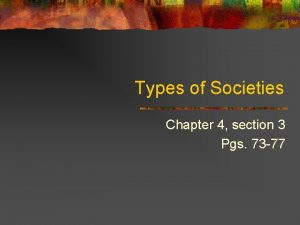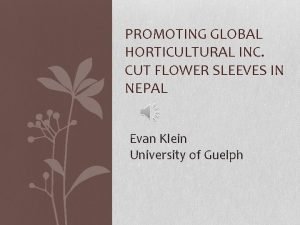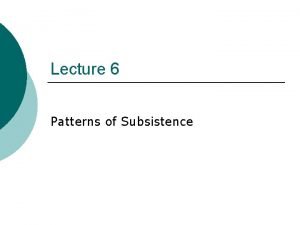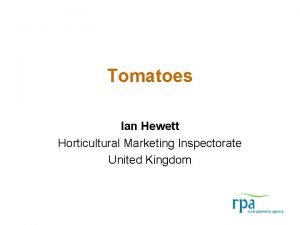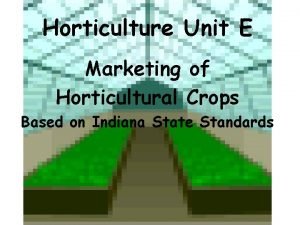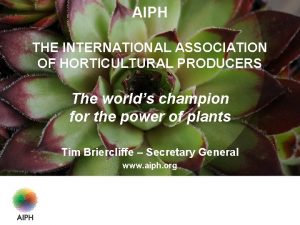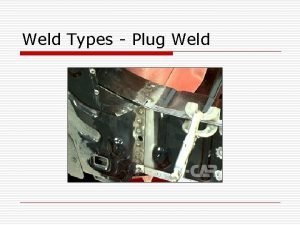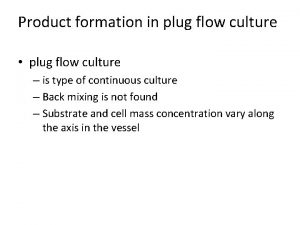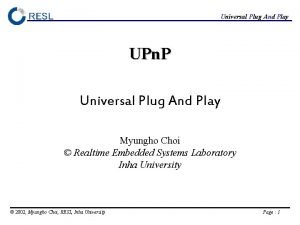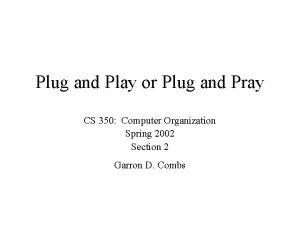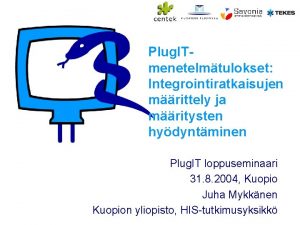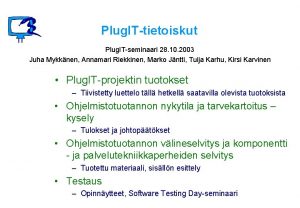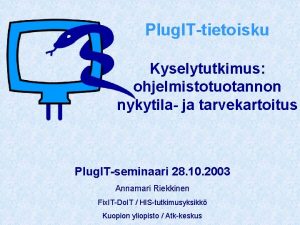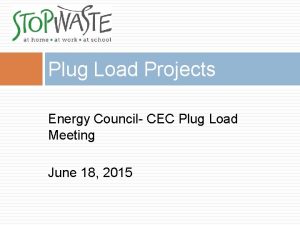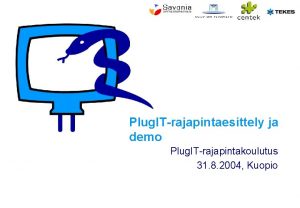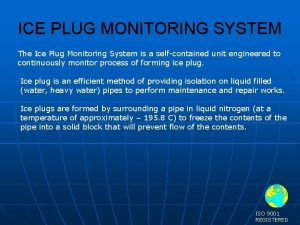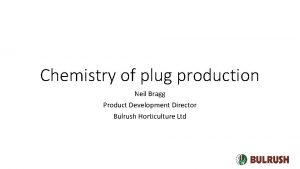Plug Culture Neil Anderson Dept of Horticultural Science




















- Slides: 20

Plug Culture Neil Anderson Dept. of Horticultural Science University of Minnesota ander 044@umn. edu

Plug Production (containerized transplant) Allows for mechanization Advantages of traditional seedling flat methodology Optimized time, space, labor during sowing, transplanting, and growing Success with plug production rests with the personnel

Requirements Understand plant growth & development 5 factors of plant growth Environmental manipulation to optimize plug growth Know the signs of suboptimal growth Take quick action to resolve problems

Before starting…. Select proper plug cell size for your crop 128 - 800 cells/tray Most common: 288, 512 Other options: cell depth, cell shape differences; tray design The smaller the plug size, the more vulnerable it is to fluctuating nutrients, oxygen, moisture, p. H, SS

Main decision: Cell size & type of plug tray Decision is based on crop type, root structure, seed/seedling size, size of finished container, production timing Small cells: finish well in flats Larger cells: used in pot, basket, planters Seasonal differences: may use small cells (512) early and larger (288) later

Flat filling May be filled by hand or mechanically Important considerations: 1. Add moisture to dry media before filling 2. Fill trays uniformly 3. Do not circulate the same medium through a flat filler continuously (produced smaller particles)

4. Make a depression in the top of the plug tray by brushing off excess ‘soil’ 5. Larger seeds may require a deeper depression. 6. Avoid compaction: cross-stack the trays.

Ordering seeds Select proper type for each crop Marigolds (detailed), tomatoes (defuzzed), ageratum (dewinged) Begonia, petunia (pelleted) Odd-shaped seeds of marigold, dahlia, zinnia (coated) Order only enough for the current season Store at 42 F (5. 6 C), 25 -35% R. H.

Germination Needs Arrange crops by germination needs (Table 3 -1, Buck--p. 26). Cover, soil temp (Stage I), moisture, light Mist/fog system: droplet size of 10 -80 microns

Stages--Use them! Stage I—germination, radicle emergence from the seed (moisture, optimal temps, oxygen). Germ counts done at this stage (% Germ) Stage II—when the radicle has penetrated the soil, hypocotyls elongation/leaf expansion occurs; (less water, more root aeration, cooler temps) Stage III—true leaves grow/develop Stage IV—seedlings ready for shipping or transplanting. Yield Potential is recorded

Environmental, Cultural conditions Linked with seedling development. Stages I-II: most critical time period; need optimal moisture, oxygen, temperature, light levels

Summary of growth factors for Stages I-IV

Water Quality Test your water supply 2 x - 4 x / year Test for alkalinity, SS (EC), dissolved nutrients Alkalinity (lime in the water): more important than p. H; want 60 -80 ppm using acid injection SS: <1. 0 mmhos Nutrients: Na competes with Ca, Mg; want Na<40 ppm; B<0. 5 ppm

Media Quality Buy a quality plug mix from a reputable producer Test it!!!!! Must hold water but have good air porosity (2 -10%). p. H: 5. 5 -5. 8 for most crops (nutrient avail. ) Geraniums, marigolds, impatiens, lisianthus: p. H 6 -6. 2 within 2 wks.

SS Start with <1. 0 mmhos: will increase germ. and control early seedling stretch low NH 4, P Starter charge: if no starter nutrients included, start feeding with 50 ppm N of a balanced fertilizer low in NH 4





 International society for horticultural science is at
International society for horticultural science is at International society for horticultural science
International society for horticultural science Applied principles of horticultural science
Applied principles of horticultural science Neil anderson umn
Neil anderson umn Simple horticultural societies
Simple horticultural societies Global horticultural inc
Global horticultural inc Simple horticultural societies
Simple horticultural societies Horticultural maturity example
Horticultural maturity example Horticultural marketing inspectorate
Horticultural marketing inspectorate Marketing of horticultural crops
Marketing of horticultural crops Horticultural technician apprentice
Horticultural technician apprentice Horticultural knife
Horticultural knife International association of horticultural producers
International association of horticultural producers Pastoral society characteristics
Pastoral society characteristics Horticultural crops classification
Horticultural crops classification My favourite subject is c
My favourite subject is c Dept nmr spectroscopy
Dept nmr spectroscopy Fl dept of agriculture
Fl dept of agriculture Finance departments
Finance departments Building department worcester ma
Building department worcester ma Dept. name of organization (of affiliation)
Dept. name of organization (of affiliation)




